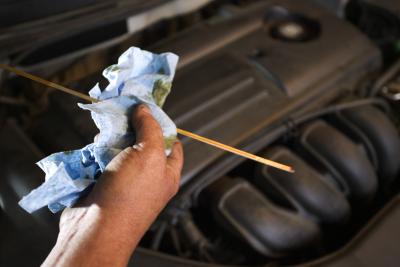
A clinking sound or the shudder of your vehicle are pretty good indicators that your vehicle's automatic transmission might be a little sick. Other symptoms include hard or sloppy shifting between gears, according to Pro Automotive and Transmission. Modern transmissions have become even more complicated and sophisticated with new internal computers. However, rather than panicking and expecting to have to replace your malfunctioning transmission, just a few easy steps can help you diagnose possible transmission problems that could be cheaper to fix.
Check to see if your “check engine” light is on by looking at your vehicle’s display panel. Be mindful that a glowing “check engine” light doesn’t automatically mean something is wrong with your transmission; only a reading of the diagnostic computer code using a scan tool will tell you this.
Check the “OD” light, or "overdrive" light. If this is flashing, an internal transmission problem exists that likely requires the attention of a mechanic. Again, this type of problem requires that a diagnostic tool be attached to the computer port. This is a free service of some auto mechanics and parts stores, while others charge for this.
Check to see if the engine is misfiring or not vibrating normally by allowing it to run with the transmission in park. By stepping on the accelerator, you can tell if the engine is running rough. In this case, an engine tuning will help.
Check the automatic transmission fluid level with the dipstick by taking it out, checking the level, cleaning it off with a rag and re-inserting it. Make sure the vehicle is on even ground and check the fluid while the engine is hot. If the level is low, add the correct fluid to bring the level up to the full mark, according to AA1Car.com. Check the ground where you park your vehicle to see if spots or a pool are present. Although you can temporarily add new transmission fluid to the engine, this problem ultimately requires attention from a mechanic, as a leak can damage the transmission internally.
Note the transmission fluid’s hue and odor by dropping some of the fluid from your dipstick onto a paper towel. The fluid should be red or light brown and should spread. If it looks dark brown, smells burned and does not spread, the fluid probably is not good.